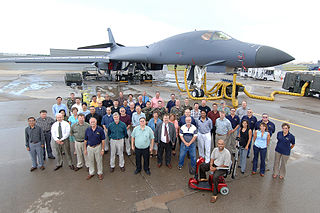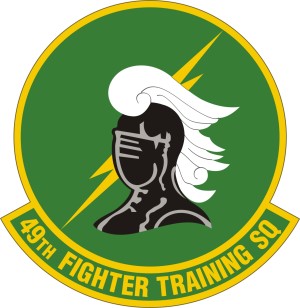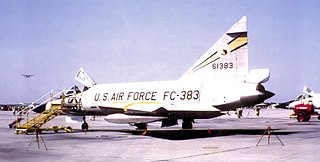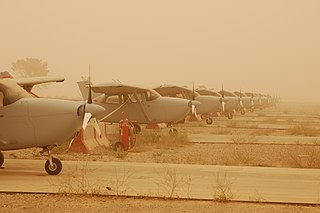| 93d Fighter-Interceptor Squadron | |
|---|---|
Squadron F-86D Sabre [note 1] | |
| Active | 1942–1945; 1946–1960 |
| Country | |
| Branch | |
| Role | Fighter-Interceptor |
| Engagements | Mediterranean Theater of Operations China-Burma-India Theater |
| Insignia | |
| 93d Fighter-Interceptor Squadron emblem (approved 6 August 1958) [1] |  |


- Note: For the current USAF unit, see 93d Fighter Squadron
The 93d Fighter-Interceptor Squadron is an inactive United States Air Force unit. Its last assignment was with the Albuquerque Air Defense Sector, stationed at Kirtland Air Force Base, New Mexico. It was inactivated on 8 July 1960.

The United States Air Force (USAF) is the aerial and space warfare service branch of the United States Armed Forces. It is one of the five branches of the United States Armed Forces, and one of the seven American uniformed services. Initially formed as a part of the United States Army on 1 August 1907, the USAF was established as a separate branch of the U.S. Armed Forces on 18 September 1947 with the passing of the National Security Act of 1947. It is the youngest branch of the U.S. Armed Forces, and the fourth in order of precedence. The USAF is the largest and most technologically advanced air force in the world. The Air Force articulates its core missions as air and space superiority, global integrated intelligence, surveillance, and reconnaissance, rapid global mobility, global strike, and command and control.
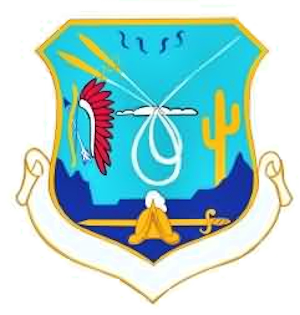
The Albuquerque Air Defense Sector (AADS) is an inactive United States Air Force organization. It was briefly active between 1 January and 1 November 1960, assigned to the 33d Air Division at Kirtland Air Force Base, New Mexico. The sector was responsible for the air defense of New Mexico and most of Texas, and was inactivated as a result of a shift towards ballistic missile defense.

Kirtland Air Force Base is a United States Air Force base located in the southeast quadrant of the Albuquerque, New Mexico urban area, adjacent to the Albuquerque International Sunport. The base was named for the early Army aviator Col. Roy C. Kirtland. The military and the international airport share the same runways, making ABQ a joint civil-military airport.









